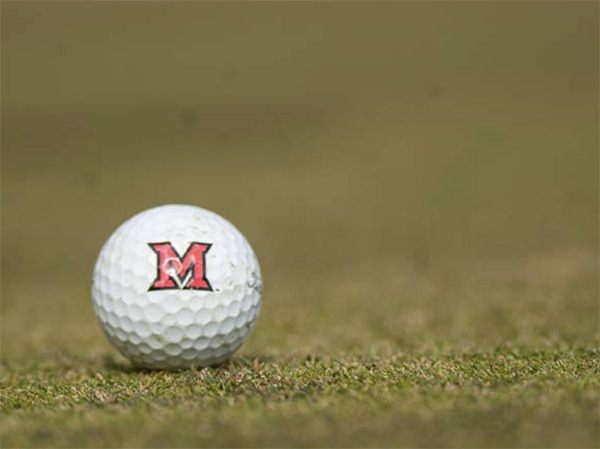High-tech hardware helps golfers unlock the secrets to a superior swing
Reflective markers, infrared cameras, and force plate technology bring new levels of data-driven analytics to golf

High-tech hardware helps golfers unlock the secrets to a superior swing
Golf is not typically known as a high-tech sport. Nor has it yet embraced the kind of data and performance analytics that now drive so many others.
But Miami University biomechanics researcher Mark Walsh and Young-Hoo Kwon, professor of Kinesiology at Texas Women's University, are using innovative technology to unlock the secrets of a superior golf swing.
“Coming from the science side of sport, everything we do is data driven, and I’m amazed that golf isn't,” said Walsh, who is professor of Kinesiology, Nutrition, and Health. “But we’ve become a data collection center for professional and amateur golfers in the Midwest.”
Until now, golf has largely relied on anecdotal strategies from coaches that often intuit solutions for players based on their own idiosyncratic perceptions of what may or may not have worked in the past.
But that’s changing, Walsh said. The technology in his lab uses a combination of several high-tech integrations including reflective markers and force plates to render computer generated models of golfers taking different kinds of swings.
“We can show you that this is where you started, and this is where you're at. Not only are you hitting the ball farther, but this is why. These are the concrete things that changed. You can see it. It gives the golfers validation, and it validates what we're doing.”
An infrared quadrascopic camera also calculates ball speed, distance, trajectory, and spin, as well as how far the ball will bounce or roll backwards after hitting the ground.
“We get a lot of useful information,” Walsh said. “We know all the forces going through each leg in three dimensions, and all the movements [a player’s body is] making. And we can give [players] tips on how to improve their swing, and decrease their chance of injury."
So far, their research has largely focused on long-distance drives. And it’s helping golfers and golf coaches rethink a variety of common practices and approaches, many of which may intuitively seem effective, but, in reality, can ultimately be unproductive.
To increase driving distance from 150 yards to 200, one may intuit that an increase in raw strength or swing power is required to drive the ball further.
Not so, said Walsh.
The sequential motion of the swing is far more complex than that. And after studying the data from hundreds of computer generated models, it becomes clear that many other, more nuanced biomechanical factors are involved.
For example, rather than simply adding more raw power to a swing, a particular golfer may instead need to shift weight from the right leg to the left, raise an elbow higher, and increase their backswing to downswing ratio — or any other combination related factor, Walsh said.
So far, Walsh and Kwon have already worked with several pro golfers, and many top amateur golfers across the Midwest.
Various Ohio high school golf coaches are also getting student athletes involved, and for a $600 lab fee, anyone interested in having their swing analyzed can sign up as well.
“It’s win-win for everybody,” said Walsh. “The golfers get better, and the sign-up fees keep our lab supplies going. It's also great for our Miami students because they get hands-on research and elite athlete support experience."
From a sport analytics perspective, it’s also arguably a win for the game itself, as their work is helping golf move from an art to a science.